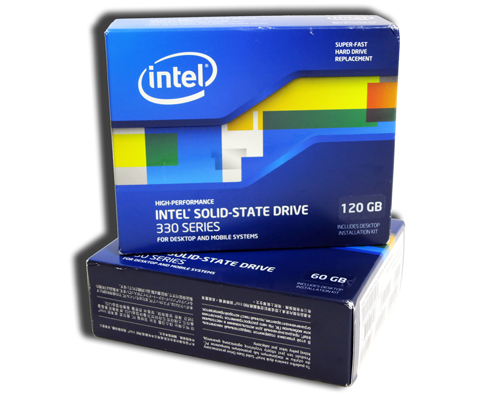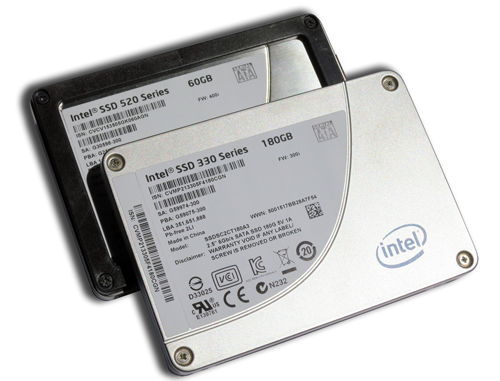Intel SSD 330 Review: 60, 120, And 180 GB Models Benchmarked
Intel SSD 330: SandForce At A Lower Price
Like the late, great comedian Rodney Dangerfield, it sometimes seems that leading SSD controller maker SandForce just "can't get no respect”. A key player in the dramatic growth of the SSD marketplace, SandForce is the controller vendor of choice for a majority of today's solid-state drive manufacturers, and it deserves credit for helping those companies boost sales while aggressively cutting costs. Despite SandForce's success, potshots from competitors aimed at the company's data compression technology have sometimes forced SandForce to duck for cover.
Drives based on SandForce's second-gen controller rely on proprietary data compression technology to achieve exemplary SATA 6Gb/s-class performance. However, the company is often criticized for using its data compression as a "gimmick" that inflates or misrepresents storage benchmarks. Some believe those accusations have merit, while others dismiss them as an example of market success triggering unjustified competitive scorn.
Much of that disparagement faded when Intel launched its SandForce-based SSD 520 series (check out Intel SSD 520 Review: Taking Back The High-End With SandForce). After all, Intel is not known for embracing "gimmicky" technology to achieve performance. Adopting SandForce-based controllers in its SSDs created a slight marketing challenge for Intel: the company's new SSD 520 delivers performance similar to OCZ's older Vertex 3 based on the same controller technology. Further, Intel's SSD 520 series typically commands a premium over the other SandForce-based drives out there. Perhaps that's why the SSD 520s include generous five-year warranties.
Most of the vendors building SSDs with SandForce controllers employ a couple of different tiers, simultaneously targeting mainstream and high-end customers. Intel is doing things a little differently, though.
The company continues to ship SSD 320 drives based on its own 3 Gb/s flash controller. Meanwhile, it also recently introduced the entry-level SSD 330. Together with the SSD 520 family, Intel is taking on a multi-tiered approach intended to address a maturing SSD segment where one model cannot satisfy everyone.
As Intel's second SandForce-based drive line-up, the SSD 330s are positioned underneath the SSD 520s as inexpensive performance-oriented alternatives offering SATA 6Gb/s-class performance more affordably. The SSD 330 series is only available at three capacity points: 60, 120, and 180 GB.
The following table allows you to contrast the specifications of Intel's SSD 520 and 330 families, both of which employ second-gen SandForce controllers.
Get Tom's Hardware's best news and in-depth reviews, straight to your inbox.
| Intel SSD 330 / Intel SSD 520Compressible Performance | 60 GB | 120 GB | 180 GB |
|---|---|---|---|
| 4 KB Random Read (IOPS) | 12 000 / 15 000 | 22 500 / 25 000 | 42 000 / 50 000 |
| 4 KB Random Write (IOPS) | 20 500 / 23 000 | 33 000 / 40 000 | 52 000 / 60 000 |
| 128 KB Sequential Read (MB/s) | 500 / 550 | 500 / 550 | 500 / 550 |
| 128 KB Sequential Write (MB/s) | 400 / 475 | 450 / 500 | 450 / 520 |
The SSD 330s certainly doesn't appear to be hobbled at all, despite Intel's apparent value focus. Because they occupy a space one tier below the SSD 520s, these 330s go heads-up against mainstream SSDs like OCZ's Agility 3 and other drives that combine asynchronous flash with SandForce's tech.
In theory, drives like the Agility 3 should be just a bit faster in sequential read and write performance, if the manufacturers' own benchmarks are to be believed. If that were the case, of course, we wouldn't have to worry about doing such a thorough job. In our massive 60 GB SandForce-based SSD round-up, we saw almost-identical sequential performance from Intel's SSD 520 and OCZ's Agility 3. Random read performance was Intel's only significant advantage. We're eager to see how these less-expensive models fit into that picture.
Current page: Intel SSD 330: SandForce At A Lower Price
Next Page Inside The SSD 330: A Binned 520?
